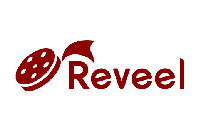Introduction
Every home accumulates clutter over time. Unused furniture, broken appliances, and forgotten items in storage areas gradually fill valuable space. Managing these materials becomes more challenging as they pile up, creating disorganization and even safety concerns. A structured approach to disposal not only restores order but also enhances comfort, hygiene, and functionality within the home. Professional and efficient junk removal ensures that unwanted materials are handled responsibly, recycled where possible, and disposed of in accordance with environmental regulations. This article provides a comprehensive guide for planning and completing a residential junk removal project with precision and care.
Assess and Identify What Needs to Be Removed
The first step in an effective cleanup is evaluation. Walk through each room, garage, and outdoor area to determine what items are no longer needed. Objects that are broken, outdated, or taking up unnecessary space should be categorized for removal. Evaluating the condition and purpose of each item clarifies what can be reused, donated, recycled, or discarded.
Understanding the volume and type of material helps estimate the effort and resources required. Large items like furniture and appliances may require specialized handling, while smaller debris can be consolidated. A thorough assessment ensures that every decision aligns with both personal needs and local disposal guidelines.
Develop a Detailed Removal Plan
A clear plan prevents confusion and delays. Decide whether to conduct the project independently or hire professional services. For extensive cleanouts, professional assistance saves time and ensures compliance with environmental and safety standards. Determine the order of removal, beginning with bulky or hazardous items before addressing smaller clutter.
Scheduling is important to minimize disruption. Choose times when family members or helpers are available to assist. Confirm access routes for hauling materials, ensuring that hallways, driveways, and doors are clear. Preparation at this stage allows smooth execution and reduces the risk of damage or injury during the process.
Separate Items for Disposal, Donation, and Recycling
Responsible disposal begins with separation. Items that remain functional but unwanted can be donated to local charities, schools, or shelters. This reduces waste while benefiting the community. Materials such as glass, metal, and cardboard can be recycled according to municipal guidelines.
Hazardous items like batteries, paints, and electronic devices require special attention. Local recycling centers or hazardous waste facilities can handle them safely. Clearly labeling and sorting each category streamlines collection and ensures that materials end up in the proper destinations. Responsible separation contributes to sustainability and environmental care.
Hire Professional Junk Removal Services When Needed
For large or complex projects, hiring a professional team simplifies the process. Trained personnel handle heavy lifting, transportation, and disposal efficiently. They possess the equipment required for safe removal of bulky or hazardous items. Professionals also ensure compliance with local waste management regulations.
When choosing a service, verify licensing, insurance, and reputation. Reliable providers issue estimates based on volume and type of waste. Transparent pricing and eco-friendly practices are indicators of quality service. Partnering with professionals saves time, prevents injuries, and guarantees that materials are processed responsibly.
Prepare the Property for Removal Day
Preparation ensures efficiency when the removal begins. Clear pathways from each collection point to the exit or truck loading area. Protect floors and walls from scratches by using covers or padding where necessary. Grouping similar items together helps workers load faster and reduces confusion.
Inform neighbors in advance if large trucks or equipment will occupy driveways or streets. For apartment or gated communities, obtain necessary permissions from management. Proper organization minimizes delays and allows for a safe, orderly operation from start to finish.
Ensure Safe Handling and Transportation
Safety is a central element of any removal project. Heavy or sharp objects must be lifted properly using the right posture and assistance. Avoid overloading containers and always use gloves when handling potentially hazardous materials. Professional crews employ dollies, straps, and ramps to move heavy loads safely.
Transportation vehicles should be appropriate for the volume and type of material. Enclosed trucks prevent debris from falling during transit, while open haulers with secure covers are suitable for larger non-hazardous items. Ensuring safe handling protects people, property, and the environment throughout the process.
Dispose of Waste Responsibly
After collection, waste must be disposed of according to local environmental regulations. Modern junk removal companies prioritize recycling and reuse before landfill disposal. Materials are transported to approved facilities where sorting, shredding, or repurposing takes place.
Homeowners who manage the project themselves should confirm acceptable drop-off points for each material type. Some municipalities organize community recycling days or bulk pickup services that support responsible disposal. Following these systems reduces landfill burden and contributes to cleaner communities.
Clean and Restore the Cleared Space
Once clutter has been removed, take the opportunity to clean the space thoroughly. Sweep or vacuum floors, wipe surfaces, and inspect for damage that was previously hidden. Freshly cleared rooms often reveal potential repairs or improvements that were overlooked.
Reorganize remaining items in a logical manner, using shelves or storage bins to maintain order. The sense of spaciousness and cleanliness achieved after successful junk removal often inspires further home improvements or redesigns. A well-cleaned environment restores comfort and efficiency to daily living.
Maintain a Clutter-Free Home Long-Term
Preventing clutter from returning requires new habits. Adopt a rule of reassessing possessions periodically to determine their continued usefulness. Avoid impulse accumulation by purchasing thoughtfully and donating unused items promptly.
Implementing regular mini-cleanups keeps rooms organized and manageable. Storing items in labeled containers and dedicating specific spaces for seasonal decorations or tools simplifies maintenance. Consistent attention ensures that the benefits of junk removal last far beyond the initial project.
Conclusion
A comprehensive approach to junk removal transforms homes both physically and mentally. It reclaims valuable space, enhances organization, and supports environmental responsibility. Whether handled independently or through professionals, careful planning, safe execution, and responsible disposal ensure success. A clutter-free home promotes clarity, reduces stress, and reflects efficient living. By maintaining ongoing order, homeowners preserve the harmony and cleanliness established through this important process.


































